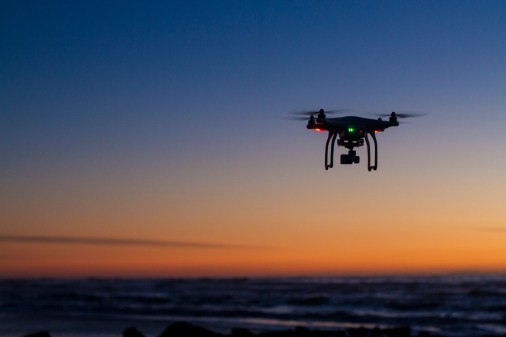After more than a decade of war, unmanned aerial systems, or drones, have become the symbols of America’s technological wizardry and the subject of heated debates surrounding privacy and the use of remotely piloted aircraft to kill terrorists.
Americans have become accustomed to nightly news reports of unmanned aircraft attacking al-Qaida leaders in Afghanistan while being controlled by U.S. pilots from thousands of miles away. And while the lack of transparency surrounding civilian casualties has led to questions about both the effectiveness and morality of using weaponized remotely piloted vehicles, a new debate is taking shape within the Pentagon focused on how the military can maintain its operational edge in UAS capabilities in a world where the technology is fast becoming commonplace.
“We know that the technology is viable … [but] now we’re looking at what are the future roles of the technology that we built,” said Col. Kenneth Callahan, director of the Air Force’s Remotely Piloted Aircraft Capabilities Division, at a May 8 panel discussion hosted by the Center for Strategic and International Studies.
According to Callahan, the technology required to design and build an armed unmanned aircraft is not very sophisticated and widely available. In fact, nearly two dozen countries have already developed or are developing armed drones, according to a recent study by Rand Corp. And within a decade, the technology and the cost of doing so will be well within the capabilities of most nations.
“It’s not a complicated piece of machinery,” Callahan said.
Most U.S. military rivals already know how to build an unmanned system and put a camera on it, Callahan said. So, rather than attempting to steal the technology, these countries are most likely interested in learning how the U.S. employs the systems.
The U.S. military finds itself at a crossroads when it comes to unmanned systems. Ten years of experience employing remotely piloted vehicles in Iraq and Afghanistan has produced a sizable set of lessons learned to help guide future employment of the systems. But there remain significant questions about the role of unmanned systems in the Pentagon’s new and evolving warfighting doctrine, which focuses on regions of the world where the U.S. may not have uncontested access to the skies.
“With the effective 2014 end of the Afghanistan war, commitment within DOD to explore the broader possibilities of unmanned systems is retreating,” concluded a new CSIS report. That report, “Sustaining the U.S. Lead in Unmanned Systems,” went as far as to warn that the U.S. could fail to realize the full potential of unmanned systems unless their role is elevated within the Pentagon leadership structure and budget cuts are reversed.
As of July 2013, the U.S. counted nearly 11,000 unmanned aerial systems in its military inventory. However, DOD is in the middle of its third consecutive year of cuts to research, development, evaluation and testing for UAS, down more than 33 percent since last year.
But the U.S. military remains the world leader in terms of its ability to command and control unmanned systems on a global scale, as well as its ability to integrate UAS platforms for surveillance, reconnaissance and intelligence. The next step in the evolution of UAS operations, however, involves integrating unmanned systems into much broader operational categories, such as logistics, close air support, and combining unmanned aircraft with piloted fighter aircraft.
“Can you automate that? Can you provide a loyal wingman that can be there and show up when you need him and you can direct and employ the weapon,” asked Callahan. “Those concepts are definitely being debated inside the [Pentagon].”
But for now, such capabilities remain conceptual and fraught with danger. Of particular concern is the concept of autonomy—allowing unmanned systems to make certain decisions without human interaction. It is especially troublesome for the Army and Marines, both of which are working on ways to integrate weaponized unmanned systems in support of troops on the ground.
For now, ground combat commanders are more comfortable with the idea of putting weapons on an unmanned system that must then be fired by a soldier or a Marine.
“Infantry commanders are very hesitant to put a level of unmanned weaponization, even with some autonomy, on a direct fire weapon because that round is going to keep going until it hits something that it probably shouldn’t hit,” said Lt Col. Michael Hixson, the Marine Corps’ chief information officer for unmanned ground systems. “Marine infantry commanders just generally like to have an eyeball behind that sight.”
Hixson’s concerns, however, reveal a potential capability that ground commanders are pushing for—unmanned systems that have enough autonomy to take advantage of emerging technologies, but that are not separate from the human decision process.
“Can you link in an authority to shoot in an unmanned system, identify a target and have a Marine … press send?” asked Hixson.
That capability is already in some training systems that have been fielded by the Army, Hixson said.






